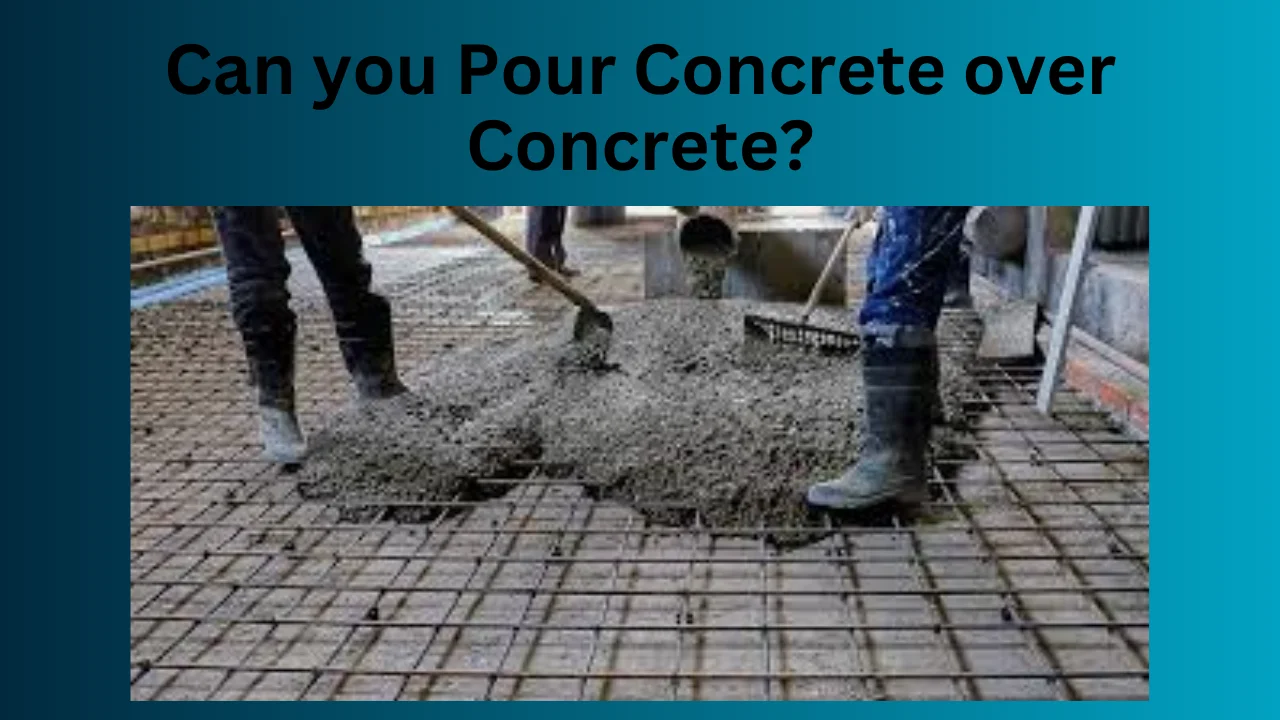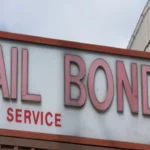As a frequent and efficient way to upgrade and repair different concrete structures, pouring concrete over previously laid concrete is a typical practice in the construction industry. Driveways, patios, floors, and other concrete surfaces can be improved using this technique, which adds a new layer without removing the old one. If done properly, this process can enhance the look and functionality of concrete surfaces while also prolonging their lifespan. In this article we explore this term “Can you Pour Concrete over Concrete?”
Understanding the Application
When it comes time to renovate concrete infrastructure, concrete overlays are a great option for homeowners, businesses, and municipalities. If the current concrete is in decent shape overall but has surface flaws like cracks, discolorations, or uneven textures, this technique will work wonders for the project. By pouring fresh concrete on top of the existing, we can improve the structure’s appearance without compromising its structural integrity.
Essential Considerations for Concrete Overlays
Preparing Concrete for Overlay
How well the old surface is prepared determines how well new concrete can be poured over it. Thoroughly cleaning the old concrete is essential to ensure it is free of contaminants like dust, oil, or grease. In order to lay a solid foundation for the new layer, any damage or cracks should be filled. If you want your overlay to stick well and last, you need to do this prep work first.
Bonding Concrete Layers
Applying a bonding agent between the fresh and old concrete layers is crucial for achieving a strong bond. Prior to pouring the new layer of concrete, the surface of the existing layer is prepared with bonding agents, which are specific adhesives. By bridging the gap between the two layers, they strengthen the overlay and stop it from delaminating.
Reinforcing Concrete Overlays
Extra reinforcement might be required if the overlay is going to take a lot of weight or handle a lot of traffic. Wire mesh or steel bars can be laid down before concrete is poured to achieve reinforcement. The reinforcement in concrete improves the surface’s strength and durability by distributing loads more evenly.
Concrete Overlay Techniques
The existing concrete’s condition and the desired finish dictate the technique to be used. Some examples of such overlays are self-leveling overlays, which provide a perfectly flat surface without the need for spreading or smoothing, and stamped overlays, which mimic the appearance of real materials like wood, brick, or stone.
Concrete Resurfacing Methods
The process of resurfacing entails covering the existing concrete with a thin layer of a specifically mixed concrete. In most cases, this method requires less preparation than a complete overlay, making it perfect for surfaces with small imperfections. Decorative treatments can also be applied to resurfaced surfaces to improve their visual appeal.
Advantages of Concrete Overlay
For both commercial and residential projects, concrete overlays are a popular choice due to their many advantages. They save money because they don’t require tearing up old concrete or paying to have it removed. In terms of design flexibility, overlays are great because they let you personalize the look of your property with patterns, colors, and textures. In addition, concrete overlays are long-lasting and resilient, able to endure severe weather, high volumes of traffic, and other environmental challenges with the right care and upkeep.
Optimal Conditions for Concrete Overlays
Assessing the Structural Integrity of Existing Concrete
The structural integrity of the underlying concrete must be assessed before the decision is made to pour concrete over an existing surface. For example, an overlay may not be able to repair deeper issues, so it’s important to look for things like signs of subsidence, extensive spalling, or deep cracks. It may be necessary to repair or replace the existing concrete if it is not structurally sound before deciding to overlay it.
Choosing the Right Concrete Mix
Overlay durability and adhesion are highly dependent on the concrete mix used. Additives, such as polymers, should improve the mix’s bonding capabilities and increase its high tensile strength. With the correct mixture, you can delay the onset of cracking and delamination by withstanding weathering and heavy loads.
Climate Considerations for Concrete Pouring
Both the time and technique of pouring concrete overlays are greatly affected by the local climate. The perfect weather would be mild and dry. The curing process and ultimate strength of the overlay are both impacted by extremely hot or cold temperatures. Concrete poured in extremely hot weather dries too quickly, increasing the likelihood of cracks, while concrete poured in extremely cold weather fails to cure properly, weakening it.
Techniques for Enhanced Durability and Aesthetics
Using Bonding Agents for Concrete
Enhancing the structural integrity of the overlay is another function of bonding agents beyond simply adhering new concrete to old. To get the desired results—a long-lasting bond—from these agents, it’s important to choose them carefully and apply them according to the manufacturer’s instructions.
Texturing and Coloring Concrete Overlays
Both form and function are considered when working with textures and colors. Color additives can lower surface temperature or blend the surface with surrounding materials, improving the overlay’s form and function; textures can offer non-slip surfaces for safety, especially in wet conditions.
Sealing Concrete Overlays
Finally, to protect the new and old concrete layers, sealant is applied. To keep the overlay in good condition for longer and prevent stains, wear, and water damage, use a high-quality sealer. It improves the concrete’s color and finish, making it look better for longer and protecting it from fading.
Long-term Maintenance and Care
Regular Cleaning and Resealing
Cleaning and resealing a concrete overlay on a regular basis will keep it looking good and extend its life. In addition to preventing the surface from appearing worn down, this also shields the concrete from the damaging effects of the elements and chemicals.
Monitoring for Wear and Tear
Preventing minor wear and tear from becoming major problems requires regular inspections. It may be necessary to perform more frequent maintenance or spot repairs in areas with heavy traffic or load to keep the overlay in good condition and prevent it from deteriorating too quickly.
Repair Strategies for Damaged Overlays
If you want your overlays to last, it’s crucial to know how to fix small cracks and wear. In many cases, concrete overlays can be repaired with patching compounds made for that purpose, allowing for the avoidance of more extensive repairs for minor issues.
FAQs
Q: How thick should a concrete overlay be?
The thickness of a concrete overlay typically ranges from 1/4 inch to 2 inches, depending on the purpose of the overlay and the condition of the existing concrete.
Q: Can I add a patterned finish to a concrete overlay?
Yes, patterned finishes can be applied to concrete overlays, such as stamped designs that mimic brick, stone, or wood, offering aesthetic enhancement along with surface renewal.
Q: How do I ensure my concrete overlay adheres properly?
Proper surface preparation, using the correct bonding agents, and selecting the right concrete mix are crucial for ensuring good adhesion of the overlay.
Q: Is a concrete overlay suitable for all types of existing concrete surfaces?
Concrete overlays work best on surfaces that are stable, relatively intact, and free of severe damage like deep cracks or structural faults.
Q: What maintenance is required for a concrete overlay?
Regular cleaning, periodic resealing, and monitoring for any signs of damage are essential for maintaining the durability and appearance of a concrete overlay.
Conclusion
Finally, one practical and beneficial way to fix or improve concrete surfaces is to pour new concrete on top of the old. Can you pour concrete over concrete? A long-lasting and aesthetically pleasing finish that satisfies practical and aesthetic needs is possible with the correct planning, supplies, and methods. Thanks to its efficiency, affordability, and adaptability, this method remains a favorite among many.

Shannon Reyes is a seasoned writer with a knack for crafting engaging blogs on a variety of service industries, including plumbing, cleansing, moving, pest control, and roofing. With a keen eye for detail and a passion for helping readers navigate complex topics, Shannon brings her expertise to life through informative and accessible content.










